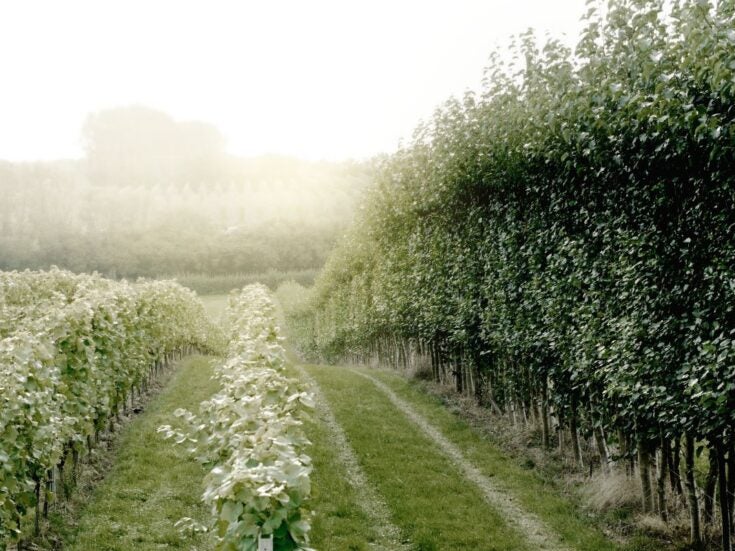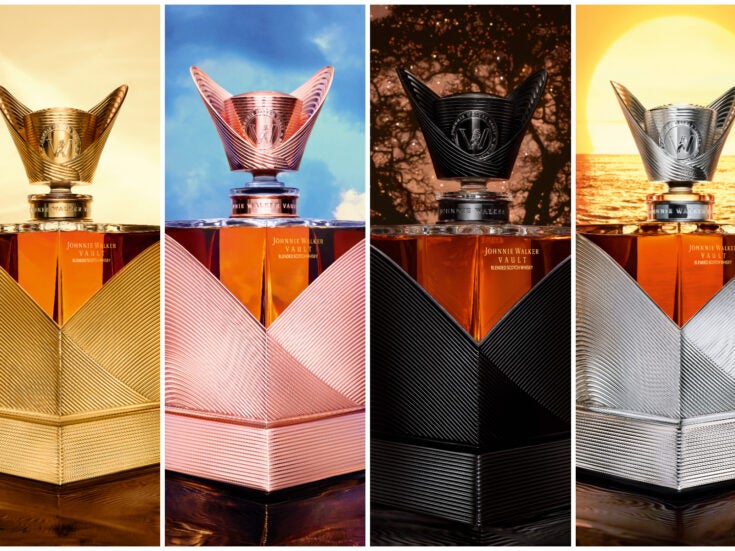
In November 2023, a new record was set at auction for a single bottle of whisky when a rare and highly collectable Macallan 1926 (bottled in 1986 with a label by Valerio Adami) fetched £2,187,500 at Sotheby’s.
There is little doubt that rarities such as this, first made available to private clients in 1986, are still appreciating, and collectors (or their estates) can profit. Although the distilleries themselves are always reluctant to discuss ‘investing’ in a bottle, they certainly want to tap into the desire for collectable whiskies by providing new opportunities. Especially as another record-breaking auction, the 2023 Distillers One of One sale at Sotheby’s, which raised £2,248,750 in total, including £562,500 from a Bowmore, was for charity.
[See also: The Last Drop: luxury spirits ‘dram team’ are producing ingenious new creations]
The frequency of releases of remarkable, old and limited-edition whiskies is increasing. Colin Hampden-White, Spear’s 500 whisky adviser and director of Cask Trade, says: ‘Alongside independent bottlers, more of the established whisky companies are producing incredible one-offs or limited releases. Such rarities as, for example, the Bowmore Onyx at the One of One auction serve as a halo for future top-end, long-aged Bowmore releases. And the advantage to the collector of buying from the distillery is that the provenance is never in question.’
While the individual bottles from the Distillers One of One are now in private hands (to be auctioned again, who knows when), the following collectable whiskies, released in recent months, are still available. The only question is whether to keep them intact, or open them to enjoy some exceptional whisky.
The collectable whiskies you need to know
Macallan Tales of the Macallan Volume II
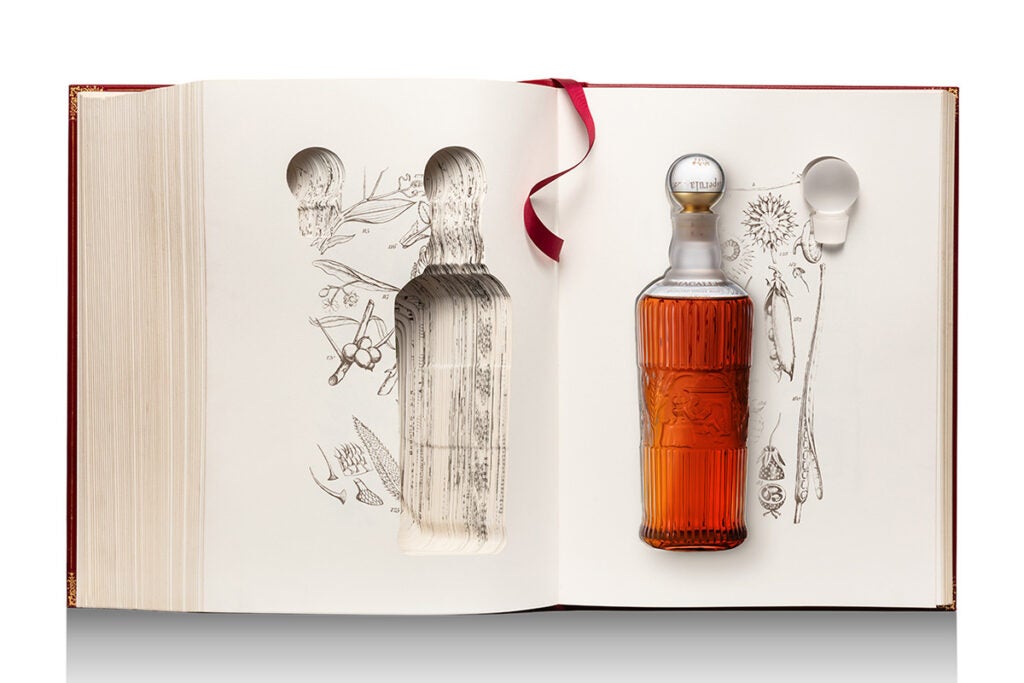
The Speyside single malt that tops most collectors’ lists of must-haves has a big year ahead – its 200th as a (licensed) distiller. It has started with a bang, with the keenly awaited follow up to Tales of the Macallan Volume I. The Tales series is a little joke on the old trope of a library of books hollowed out to hide booze. A Lalique decanter fits into the exact space for it within 800 pages of a handcrafted, leather-bound book- a break from the traditional cabinetwork.
Following 2021’s 71-year-old first edition, Volume II is even older – it comes from a cask filled with new-make spirit in 1949. It was bottled in 2022, at 73 years old, because it was felt it had reached its peak and would not improve by 2024. Plus, there was barely enough to fill 344 decanters anyway and, at just 44.8 per cent ABV, if the angels had taken much more of a share, it would no longer legally be whisky (40 per cent-plus). As you might expect from such extensive ageing, the ex-sherry and oak effects are more dominant than the new-make character – treacle, dark fruits and chocolate, baked spices such as ginger and cloves, tannic steeped tea… even a touch of wood smoke from the barrel charring.
Macallan Tales of the Macallan Volume II is dedicated to Alexander Reid, who built that first legal distillery in 1824 (the first volume honoured Captain John Grant, who founded the Easter Elchies estate that the Macallan calls home). His story is cleverly told in the remaining areas of the pages, which were individually printed by Imprimerie du Marais in Paris, in illustrations by Andrew Davidson, whose work is most noticeably seen on the glass doors of Wimbledon Centre Court. Leather binding was shared among a number of fine old names in bookbinding: Shepherds, Sangorski & Sutcliffe, Zaehnsdorf.
£77,391; themacallan.com
Ardbeg The Rollercoaster
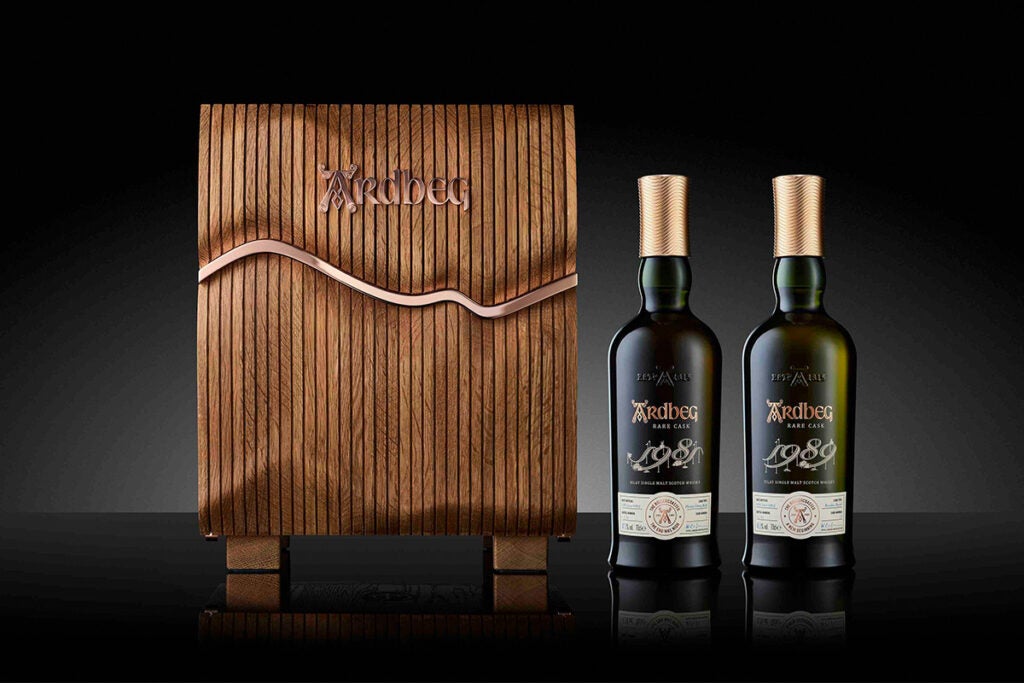
Just as a terroir that stresses the vines produces a better wine, a turbulent distillery history seems to create more desirable and collectable whiskies. As well as ghost distilleries such as Ladyburn and Littlemill, there are those who so nearly met the same fate, including seemingly invulnerable names. Ardbeg, on Islay, closed for eight years in the 1980s and again for a year in the late 1990s. In 1997, it was bought by Glenmorangie and is now part of the Moët-Hennessy portfolio.
Ardbeg acknowledges the first of these difficult periods with The Rollercoaster, 143 pairs of single malts from individual casks, one distilled a fortnight before the closure in spring 1981, the other not long after it reopened in winter 1989. The difference is fascinating. The earlier, 42-year-old whisky was aged in bourbon casks, then transferred into a single oloroso sherry cask to add some spice; the latter was matured in bourbon casks, then a refill bourbon cask to highlight the subtle peated style.
[See also: The world’s finest and rarest Cognacs of 2023]
The main difference, though, came earlier in the process, explains current Ardbeg head of whisky creation, Bill Lumsden. ‘The 1981 expression was made from some of the last malt ever to emerge from Ardbeg’s on-site maltings. It is a beautiful combination of sweet and spicy sherried notes and hints of Ardbeg’s savoury side. The 1989 is an equally singular Ardbeg. Classic notes of lime and vanilla combine with sea spray and very subtle, smoky tones,’ he says.
It is not enough, however, for rarities such as this, simply to be bottled. They must be a visually arresting artefact too. The Rollercoaster pairing comes in a presentation box crafted from solid Scottish oak by the undisputed king of the whisky artefact, Glasgow-based Irish designer John Galvin.
£85,000; enquire at ardbeg.com
The Dalmore Cask Curation Series
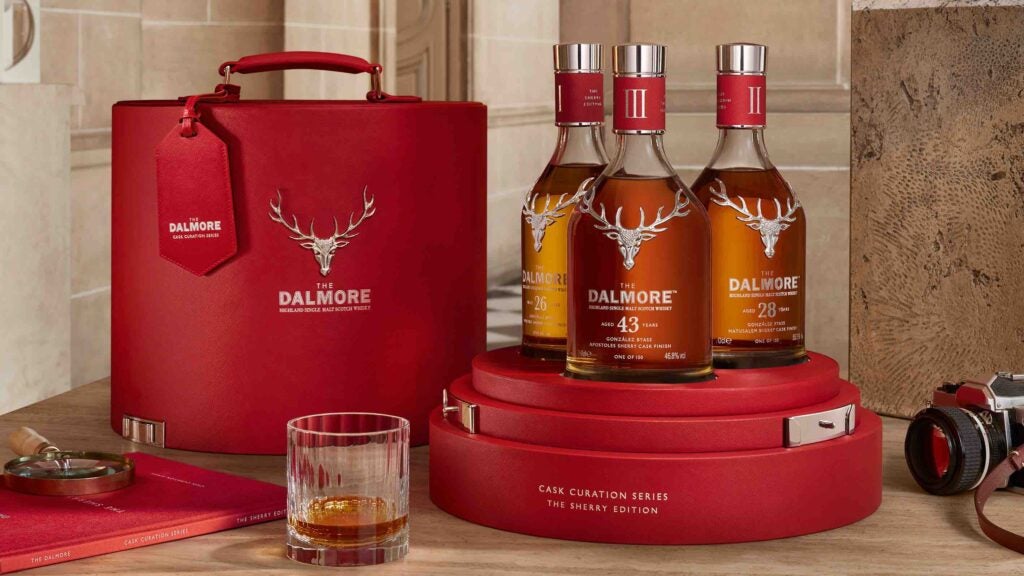
For decades, The Dalmore’s master blender Richard Paterson has been fanatical about the precision of cask choice for ageing whisky. Back when many single malts were aged simply in ‘sherry casks’, people would mock the man known as ‘The Nose’ for differentiating between oloroso, Apostoles (aged palo cortado), Pedro Ximenez and the variety he still loves to announce when presenting, the oloroso/PX blend, matusalem (‘Matooosalem!’).
Of course, everybody is ageing in different styles of sherry cask now, but The Dalmore still executes it better than most – not least because of the special relationship parent company Whyte & Mackay has with Jerez winemakers Gonzalez-Byass (and Paterson has with master winemaker Antonio Flores). There will be further Cask Collections (after all, Paterson has aged in other barrels, especially wine casks) but it was logical to kick off with the sherry edition. It comprises of three bottles of varying maturation length finished in a different cask type: a 26-year-old, finished in a vintage 2002 oloroso cask; a 28-year-old, finished in a 30-year-old matusalem cask; and a 43-year-old, finished in a 30-year-old apostoles cask.
The trio arrives in a Tuscan leather-finished travel case, which raises like a cloche to reveal the bottles on a plinth.
£30,000; enquiries at thedalmore.com
Glenglassaugh Serpentine Coastal Casks Collection
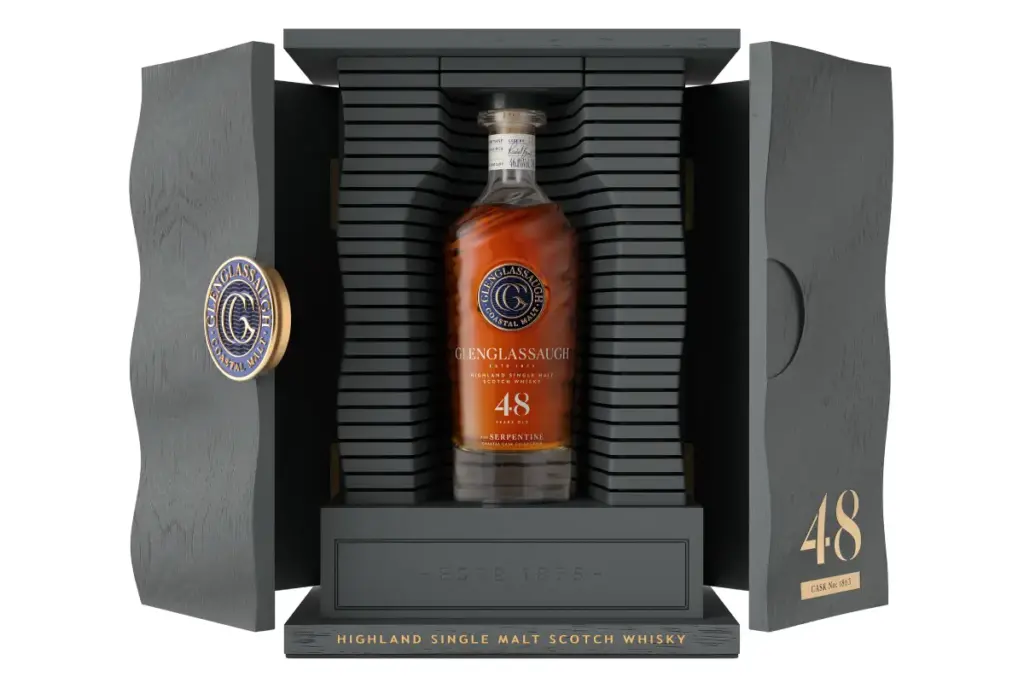
This Highland distillery on the Moray Firth is not the most internationally recognised, but it has a growing reputation under multiple award-winning master blender Rachel Barrie – the £50 non-age-statement Glenglassaugh Sandend was top of several ‘best releases of 2023’ lists. Again, Glenglassaugh is a distillery that saw a period of closure – from 1986 to 2008.
Three single malts very much not in the ‘everyday whisky’ category are being released at the beginning of 2024 that were distilled in the period before that closure and subsequent revival – the 48-year-old in 1974, the 49-year-old in 1973 and the 51-year-old in 1972.
The Serpentine Coastal Cask Collection is named after the alternative name for the Portsoy marble found around Sandend Bay and the distillery. Barrie points out: ‘It is extremely rare to find casks which have been left to mature in coastal locations for such a long period of time.’
The oldest was aged in an oloroso pucheon – bronze coloured, sandalwood and spice on the nose, balsamic raisins and salted treacle on the palate; the middle cask was in bourbon casks – golden, tropical fruits throughout; and the youngest was, unusually, aged in an Italian aleatico red wine barrique, hence its dark-fruit notes with a touch of sea salt. They are all in the 40s in terms of cask strength.
Cask 1863 (1974), £7,500; cask 5640, £8,300; cask 1723, £10,600; enquiries at glenglassaugh.com
House of Hazelwood, The Huntsman Blend
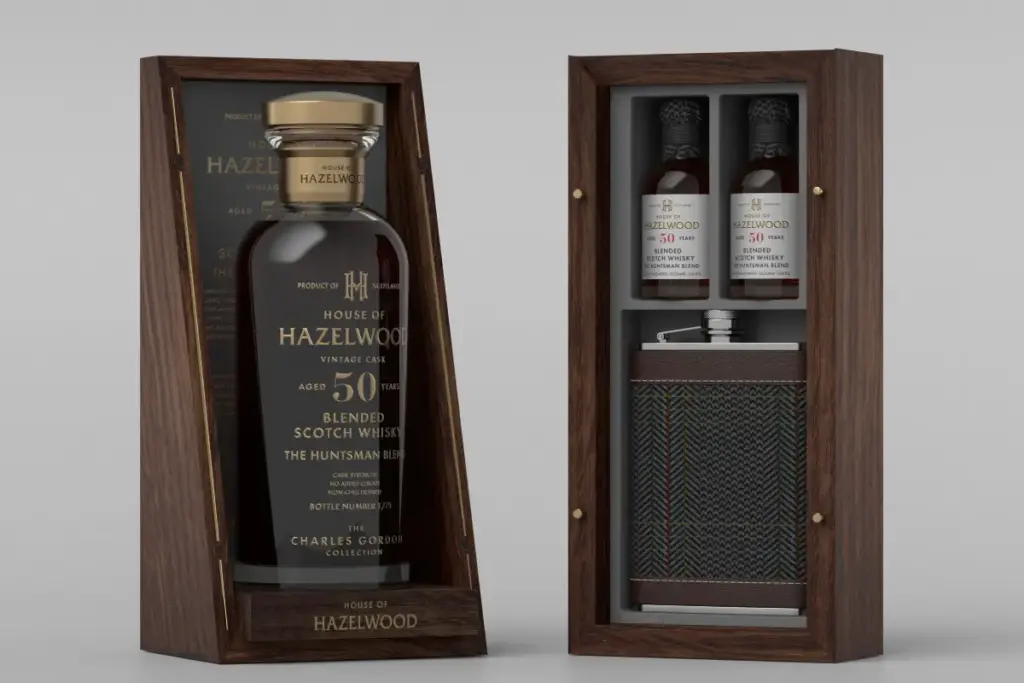
House of Hazelwood takes rarities and collectable whiskies to a new level. A venture by the Gordon family, owner of William Grant & Son, to release whiskies from their extensive private collection (dominated by Grant distilleries, but not exclusively), it is what you might call a ‘dependent bottler’. House of Hazelwood – named after the family seat – mostly creates blends, blended malt and blended grain whisky. These include bespoke blends commissioned by private clients.
Most recently, it made just 75 bottles of a blended malt available – with the youngest liquid element 50 years old – in collaboration with Savile Row tailor Huntsman (to celebrate the latter’s 175th birthday).
[See also: Scotch corner: can the Cask Whisky Association help clean up the industry?]
Huntsman creative director and head cutter Campbell Carey created a complementary tweed inspired by the Speyside landscape around Hazelwood House, which can be ordered as a suit. The Huntsman whisky gift pack contains a hip flask dressed in the same tweed, plus two samples in addition to the main bottle.
£5,900; enquiries at houseofhazelwood.com or huntsmansavilerow.com
Ladyburn Edition III
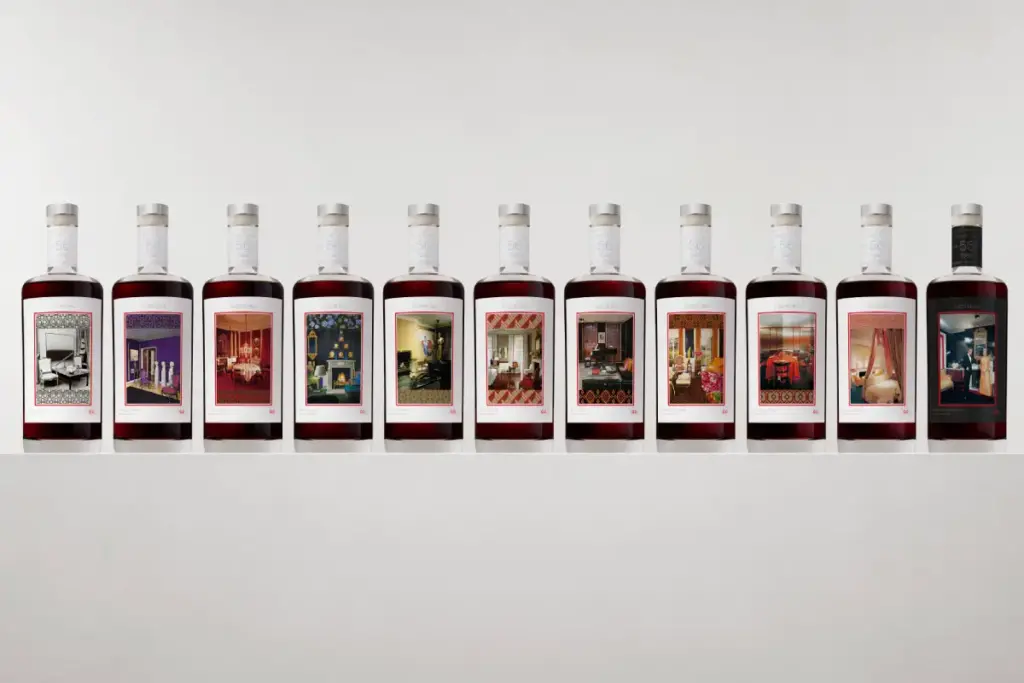
To misquote Blade Runner, the light that burns twice as bright burns half as long – and Ladyburn burned so very brightly. This Ayrshire distillery lived just nine years, from 1966 to 1975 and nearly all signs of it have disappeared. All signs, that is, except a small stock of casks. William Grant & Sons began releasing these in 2021, starting with a trilogy of 1966 casks bottled with the work of icons of 1960s visual arts on the labels. Following photographers David Bailey and Norman Parkinson, the final edition honours interior designer David Hicks, whose bold use of colour in the homes of Vidal Sassoon, Helena Rubinstein and Lord Mountbatten, as well as on the sets of Kubrick and Lester movies.
The whisky itself has complexity and depth, both in flavour and look, after 56 years in an ex-sherry butt. Grant’s master blender, Brian Kinsman says: ‘European oak has a very different biology to American oak, so, when you age whisky in it for a very long time, instead of the classic amber colour, you get an intense, almost black hue. And the flavour from the wood is different too.
‘Straight away on the nose, you get a resinous note, along with tobacco, coffee. But if you can resist drinking it for half an hour, it changes dramatically – you get little bursts of citrus, for example.’
Ladyburn Edition III is available in individual bottles, with a choice of 10 labels, or in complete sets of 11 (including a bottle design not available individually). The trilogy has only tapped into the first year of production, so there should be more collectable whiskies to come.
Price on application; privateclients@wgrant.com
Littlemill Vanguards Chapter One
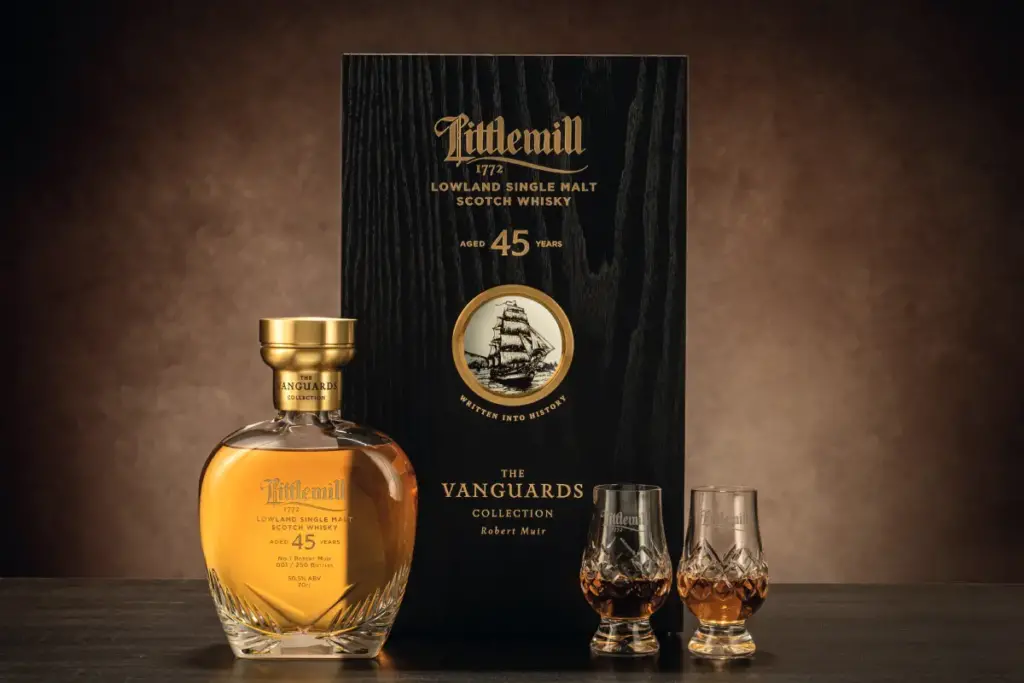
Littlemill is another ghost distillery, and one of which nothing remains except its long history. The distillery, built by Robert Muir in 1772, lays claims to be the oldest in Scotland. While 1824 is regarded as the year when the first illegal stills became legitimate (with The Glenlivet and Macallan prominent among those that took a newly available licence), there is documentary evidence to suggest that, given Muir was issued a licence to ‘retail beer, ale, and excisable liquors’ in 1773, the Lowland distillery he’d built the year before in Bowling, West Dunbartonshire, was also legal.
[See also: How to secure the latest edition of Diageo’s ‘rare’ Prima & Ultima whisky collection]
Littlemill had a tumultuous 20th century, changing hands, closing, reopening, being dismantled in 1997 and eventually burning down in 2004. The last owner, Loch Lomond Distillery, retains the old stock. This is the first of a series of releases celebrating pioneers of Littlemill, starting with Muir himself. It’s a 45-year-old single malt, distilled in 1977, aged in refill American oak for four decades, finished in an oloroso hogshead and bottled at cask strength (50.5% ABV). Only 250 bottles are available worldwide.
Even if the purchaser does intend to drink, rather than speculate (although a bonus 50ml sample allows you to do both), it is worth leaving it unopened for a few months.
Appropriately for a whisky created in the year of a British heatwave, Loch Lomond master distiller Michael Henry says: ‘Littlemill is a beautiful summer whisky, with characteristics of gentle vanilla and floral notes on the nose, the sweetness of honey and creamy fudge, accompanied on the palate by classic Lowland fresh fruits.’
The three tried and tested methods of ensuring a visual backdrop to match the liquid quality of a collectable whisky are a partnership with an artist, decanter (not bottle) created by a famous glassmaker, or the aforementioned handmade wooden case. This Littlemill has all three. Artist Vic Lee’s drawings of the original stills, warehouses and ships on the Clyde are printed on cotton paper then individually finished with ink, so each is unique. The box is handmade, from ash by local woodworkers while the crystal decanter is hand blown by Glencairn (the makers of the famous tasting glass) with cuts to represent the quill used to sign the original licence.
£12,500; enquiries at littlemilldistillery.com


